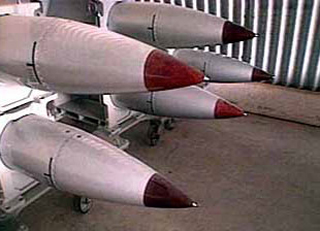
Weapons of Mass Destruction. (Image courtesy of Argonne National Laboratory.)
Instructor(s)
Prof. Steve Meyer
MIT Course Number
17.471
As Taught In
Fall 2002
Level
Undergraduate
Course Description
Course Features
Course Description
This course examines the problems and issues confronting American national security policymakers and the many factors that influence the policies that emerge. But this is not a course about "threats," military strategies, or the exercise of military power.
What threatens those interests? How should the U.S. defend those interests? What kind of military should we build? Should the U.S. enter into alliances with other countries? Do we need a larger Navy? How much should we spend on weapons procurement?
The course has four broad goals:
- to demonstrate that definitions of national security and the specification of vital interests are subjective and fluid and that they are as much functions of domestic politics as they are responses to international politics and "objective threats";
- to demonstrate that policy decisions involve complex tradeoffs among political, social, economic, military, legal, and ethical goals and values;
- to explore how the many organizations, institutions, and individuals that participate in American national security policymaking affect policy formulation, implementation, and outcomes; and
- to better understand the historical context, evolution, and linkages of national security problems and solutions.
The course is organized along an historical time line. Beginning with the final days of World War II we follow American national security policy from the first stirrings of confrontation with the Soviet Union and China, into two hot wars in Asia that cost over 100,000 American lives and spawned social upheavals, through a close encounter with nuclear war, stumbling into the era of arms control, and conclude with the collapse of the communism. Selective case studies, memoirs, and original documents act as windows into each period. What were US national security decision makers thinking? What were they worried about? How did they see their options?


